 The paint is a basic, two tone aircraft camouflage.
The paint is a basic, two tone aircraft camouflage.
Although there aren’t many details on the piece, the top is the most detailed part of the whole craft, but the dark green paint obscures most of these details which is extremely unfortunate. A wash of black paint may have helped to bring out all those subtleties. The bottom is a greenish blue. With no details on the bottom the blue only highlights the seam across the fuselage and the utter lack of details. The bottoms of the central wings look atrocious.
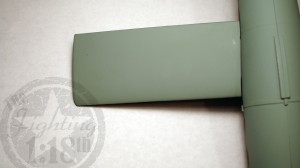 |
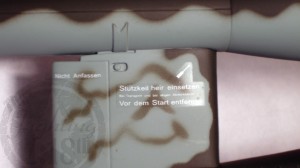 |
The tail of the craft, which also acts as an engine support, has some green painted “noodles” across it. The noodles are done in such a way that looks as if it was painted on very swiftly, or on the fly by a German painter at the factory. It is a very neat effect and one of the few areas with a smidgeon of personality.
I know that most V-1 rockets were rarely stored. Most of them were fired as soon as they came off the assembly line, but I would have liked to have seen some weathering on the piece indicative of being moved around on a trolley or bumped and bruised as the Germans moved it into place and onto the firing ramp. However, it is understandable that Pegasus probably bypassed these details as an unnecessary expense that wasn’t justified for the end consumer. These missing details allow the collector who has a discerning eye to add these little bits and make the piece their own.
 The Pegasus Hobbies V-1 Flying Bomb is an extremely simple design. The V-1 is durable to say the least. With virtually no moving parts, save for the front propeller, there is nothing that can easily snap or break. The main fuselage is comprised of two halves fused together. The drawback to this is that there is an obvious seam running the entire vertical axis of the piece. The seam is disguised as a panel line, or at least, comes off looking like a panel line, so it isn’t as distracting as one might think. On closer inspection though, you end up wishing it wasn’t that obvious.
The Pegasus Hobbies V-1 Flying Bomb is an extremely simple design. The V-1 is durable to say the least. With virtually no moving parts, save for the front propeller, there is nothing that can easily snap or break. The main fuselage is comprised of two halves fused together. The drawback to this is that there is an obvious seam running the entire vertical axis of the piece. The seam is disguised as a panel line, or at least, comes off looking like a panel line, so it isn’t as distracting as one might think. On closer inspection though, you end up wishing it wasn’t that obvious.
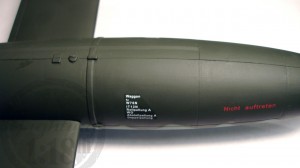 |
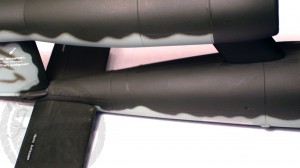 |
The most glaring example of this is on the engine. There was simply no regard for careful assembly on my copy. Along the top of the intake, and particularly within the exhaust, the seam is just awful. There are a few points along the seam where the fuselage wasn’t perfectly matched one side and sits raised from the other. This is obviously an assembly error and I can’t fault the design, I just wonder if they all have issues like this.
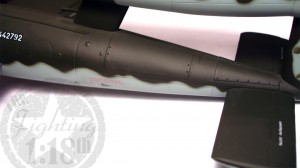 |
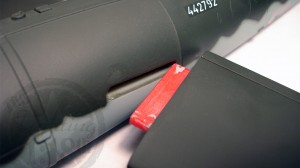 |
When you remove the V-1 from its cardboard prison, the wings are separated from the fuselage of the piece. They are removable in the same fashion as the 1:1 counterpart, but instead of having a large pin that locks into the wing root, the wings are attached with a simple tab A into slot B system and are fairly stable. Again, this was done for a design reasons, but it would have been great to see this done accurately for display in a diorama or something for those folks who enjoy that type of thing.
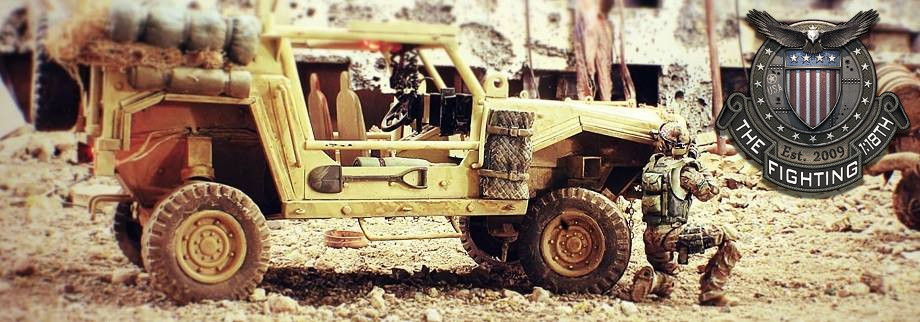 The Fighting 1:18th! The best Military 1:18 scale site on the net!
The Fighting 1:18th! The best Military 1:18 scale site on the net!
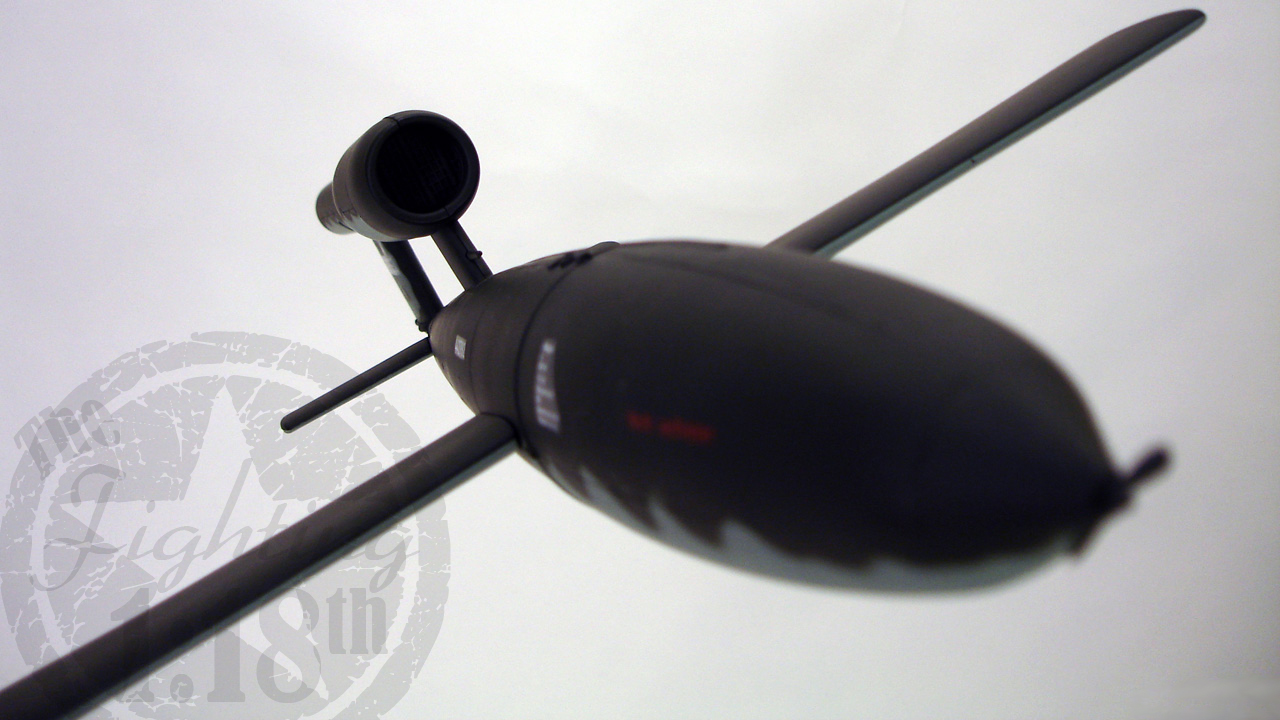


![[REVIEW] Acid Rain World Raptor MK1 [REVIEW] Acid Rain World Raptor MK1](https://www.fighting118th.com/wp-content/uploads/2014/08/Acid_Rain_Raptor_Banner-272x125.jpg)
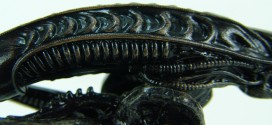
Agreed on all points, it seems you hit the majority of the details of what i briefly went over in the review. I toyed with a D rating at first, but honestly i felt bad because knowing who Pegasus is. Given the background, I was impressed they even showed up to make an effort, so i gave them an extra letter grade. If i didn’t apply the tilt it would be our lowest rated model.
Thanks again for the details. This is exactly why we have a comments section to let the people who know about the details come in and comment. It sparks discussion and that is what this is all about. Information for the hobbyist.
Some additional comment on the model:
If you examine wartime-vintage photos of the real vehicle, you’ll note that the shape of the model is off in several key aspects. (You have to be careful of post-war photos and current airframes, however, as V-1s were assembled incorrectly, with missing or surrogate parts in place of the warhead or other sections.)
o The contour of the nose is quite a bit off. On the original, the taper from the propeller aft through the compass area and into the warhead was very smoothly blended; the contours of the first 3/4″ of the model nose really do not look anything like the real article.
o The fuel tank section on the real V-1 was constant diameter, per the dimensions in Dieter Holsken’s book, “V-Missiles of the Third Reich” and corroborating photographs. On the Pegasus model, there is no constant diameter “tube” and the fuselage begins to taper near the middle of the wing, such that the diameter of the fuel section is noticeably smaller at the aft end than at the front.
o This premature taper affects the shape of the aft fuselage significantly, causing it to be too slender all the way to the aft-most point. As a result, the front engine support pylon and vertical tail/rudder appear too tall.
o The engine itself has an incorrect taper between the thicker, combustion chamber section and the tailpipe. It should be essentially a linear cone, but on the model it has some longitudinal curvature.
o The 1:1 vehicle was built very simply, in cyclindrical sections that bolted together end-to-end. There were a few rivets around access panels but, in general, the skins were rolled into shape and butt-welded together. As a result, the longitudinal seams should have been convex and weld-like rather than cleanly scribed into the moldline as on the model.
o The details generally leave something to be desired. The rectangular blob on the bottom mentioned in the article should have been a slot for the launch shuttle. The real vehicle had an external dorsal lanyard that ran from the compass at the front to the guidance and steering section at the rear. On the model, the raised ridge representing the lanyard starts aft of the warhead, instead of at the aft end of the compass housing.
o Something not specifically mentioned in the article but evident in the photos is the low quality of the applied markings. For the most part, the larger model manufacturers have used a pad-printing process to apply detailed markings such as stenciling. By using what appear to be waterslide decals for markings, the Pegasus model has shiny patches around the stenciled letters. I found this to be very distracting. A clear dull-coat spray might fix this, if that is the only thing that really bothers you.
Overall, these characteristics make the model appear very toy-like. I don’t think Pegasus Hobbies did much research when preparing this model. In fact, for most intents and purposes, the Pegasus model looks like a scaled-up version of the 1/48th scale Tamiya kit, the inaccuracies of which have been commented on rather extensively in modeling forums.
I’d say Paul’s assessment of an overall C is pretty much on the mark; I might even suggest a C- when compared to the average of what else is out there in this scale. The most comparable model of other 1:18 scale offerings would be the first-generation 21st Century P-51. I’d really hoped when I saw this model being released that it would be of comparable quality to the other large-scale models at the time, which had advanced significantly. At ~$30, it’s a nice enough “toy” to have, but with its flaws it doesn’t even represent something that could be readily customized into a true scale model of the unmanned Fi-103, or the manned Fi-103R. You might be better off scratch-building something, if that’s your goal.
I applaud Pegasus Hobbies for getting into the 1:18 scale line of models. Their first offerings have represented interesting vehicles and, with a little more attention to accuracy, I think they could have been right up there competing with “the big boys.” It’s hard to predict whether or not Pegasus is still considering future aircraft, but their continued presence would be welcomed.